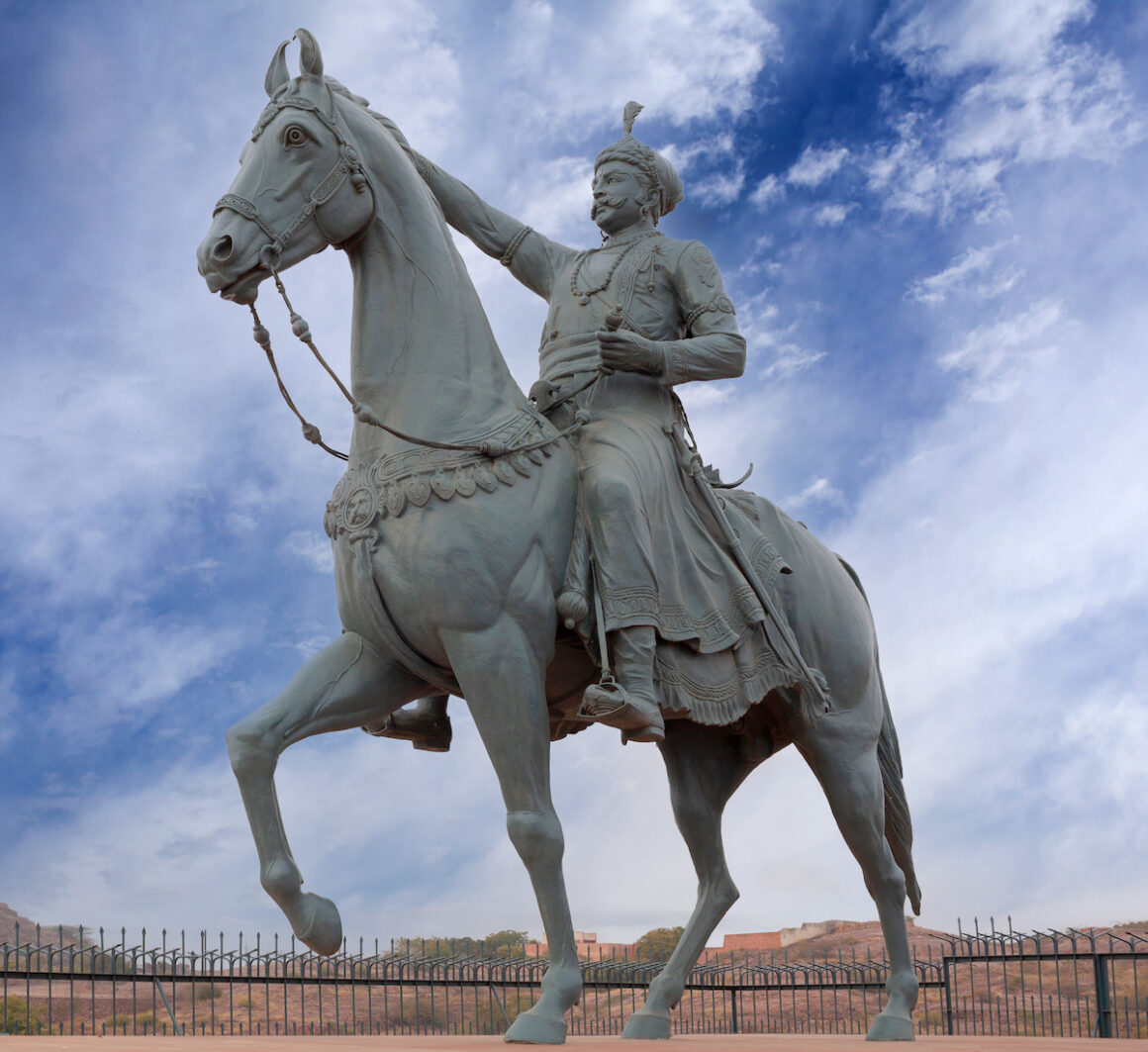The Marwari horses of India have a dramatic history filled with battles, royal breeding, near extinction, and a surprising rebound in their circumstances. The unique ears best identify these horses. They curve inwards to the point of touching each other, and the metallic sheen their coats can develop. Their endurance, bravery, spirit, and tenacity have helped them capture the attention of people internationally and safeguard their population.

Marwari horses are proud and noble creatures befitting of their colorful history and ties to royalty. These same ties, along with the mechanization of agriculture and transportation were also almost their downfall. However, the growing tourism industry in India and the breed’s connection to the history of the country rescued it.
Horses were used for thousands of years as a tool in battles, fighting wars, exploring new lands, and as a status and wealth symbol. The Marwari horses developed alongside a royal class of people in India. They helped them secure dominance. Careful breeding meant the horses had a fiery and spirited personality, incredible endurance, a strong sense of direction, and were extremely hardy.

History of Marwari Horses
The Jodhpur region in northwest India is famous as the location where the riding pants we wear came from. It’s also home to the Marwari horse. The Rathores ruled this region for generations, at the time it was called the Marwar region. Records dating back to the 12th Century show that the Rathores were breeding Marwari horses. Eventually, the Rajputana became stewards of the breed.
The cavalry used the horses. Their bravery and hardiness were respected throughout the region. Genome mapping shows they have Arabian and Mongolian horse ancestry, as well as a native and now extinct horse. The Mughals introduced Turkoman bloodlines when they gained control of the region. These bloodlines give Marwari horses shared genetics with the Akhal-Teke breed.
The Marwari horse was not immune to the political tumult India went through in the early 1900s. Royalty were the only people to breed and use Marwaris. The lower castes weren’t allowed to ride or own them. Then, independent India abolished the feudal system in 1956. Horses were given to all classes of people as draft animals. Others were gelded or killed.
Breed Characteristics
Those curved ears are a distinct breed characteristic that the Rajputana worked to incorporate into their early breeding programs. The Marwari horses’ ears can rotate 180 degrees and touch each other at the tips, forming the shape of a harp, or an upside-down mustache, like the ones of the men that once bred and rode them. Horses have large intelligent eyes, with thick eyelashes that serve as protection from the harsh desert elements. Their nostrils are large and flared.
The neck of a Marwari horse is thin at the poll and thick and muscular at their pronounced withers. The horses have long, broad shoulders that helped them move through the deep desert sand. They have strong, well-defined legs and hard hooves.
The average weight is around 880 pounds. Originally, height was around 14.3 for a stallion and 13.3 in mares, but this has increased to an average of 15 hands. Grey is the preferred breed color. Other colors include bay, chestnut, dun, piebald, skewbald, blue roan, and dun. Black horses are considered unlucky, while horses with a blaze and four white socks are considered lucky.
Fiery and spirited personalities are another defining breed characteristic. Marwari horses have thin skin and are extremely sensitive. They also have a keen sense of hearing and are highly intelligent. Horses can be trained to perform complex maneuvers. The Marwari is a gaited breed, making them comfortable over long distances.
A Second Chance
The near extinction in the late 1950s and 1960s meant the future looked bleak for the breed. Horses survived because a few people cared and were still breeding them, or at least helping them survive. Then, tourism became more common in the 1980s. Former nobles saw an opportunity to repurpose their estates and homes as tourist destinations and gained some economic footing again. They started breeding Marwari horses again too. The breed recovered from the brink of extinction, but still had a long way to go.
Connection to the United States
Francesca Kelly, an English horsewoman, and her husband James visited India for a safari in 1995. She rode a Marwari horse and fell in love, purchasing a couple of horses before the end of her trip. However, the Indian government had previously outlawed exporting endangered breeds, and the Marwari was on their list.
Mrs. Kelly started fighting with the Indian government and the U.S. Department of Agriculture to import the horses. Since the horses weren’t allowed in the United Kingdom, she bought a farm in Massachusetts as their eventual home. She finally won and imported six horses to the United States.
She and Raghuvendra Singh Dundlod, her business partner, continued breeding Marwari horses in India and working to organize breeders and develop standards. In the meantime, she also imported a few more horses to the United States.
Marwari Horses Today
The Marwari Horse Society and stud book was formed in 2009 and is stewarded and supported by the Indian government. They developed a set of breed standards that guide breeders today. A postage stamp features the breed. The Marwari Horse Society celebrates that the breed is indigenous to India and continues working to grow and improve the breed.
Most of the breed population still resides in India, and it’s extremely hard and expensive to purchase one out of the country, however not impossible. Their tumultuous history has a brighter future though, with everyone from royals to farmers breeding them today. Perhaps in the future, these horses will be even more common than they are now.
Sources: FEI.org, Horse Illustrated, Marwari Horse Society, and Smithsonian Magazine.
